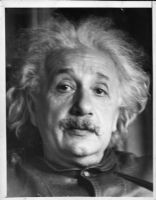Tags
Albert Einstein, Brian Greene, Elegant Universe, Faster-than-light, General relativity, light speed, Middle Tennessee State University, Physics, Quantum mechanics, rlativity, Speed of light, University of Mississippi
.
Can sound waves travel faster than the speed of light?
Yes, says Joel Mobley, a physicist at the University of Mississippi in the US. In simulations, Mobley demonstrates that ultrasound pulses could move at “superluminal” speeds (at the speed of light or exceeding that) when transmitted through water that contains thousands of tiny plastic beads.
Mobley calculated that the “group velocity” of a pulse of high-frequency sound waves could be increased by five orders of magnitude by sending it through a small chamber that contains about 8 milliliters of water and some 400,000 tiny plastic spheres. This means that the group velocity would exceed the speed of light in a vacuum. The spheres have diameters of about 0.1 mm and account for about 5% of the volume of the water-bead mixture.
The increase in speed is caused by dispersion — the phenomenon that causes different wavelengths to move at different phase velocities. When the pulse enters the mixture it experiences severe dispersion, which causes the different wavelengths to travel at very different speeds. This changes the shape of the pulse and can result in the pulse itself moving faster than the speed of light. However, the dispersion also significantly reduces the intensity of the pulses.
In a physics report posted at http://phys.org/news88249076.html, William Robertson’s team from Middle Tennessee State University also showed that the group velocity of sound waves can become infinite, and even negative. However, “no wave energy exceeded the speed of light,” said Robertson. Essentially, the pulse that made it through the filter at faster than light was an exact (but smaller) replica of the input pulse.
Gravity and space-time travel remember is what general relativity defines of most interest to Einstein’s statements about the speed of light. Is it possible that something may exceed the speed of light? Well, I’m not going to answer that yet. However, for now, I’ll say as far as I know, light speed is a cosmic speed limit. However, there may perhaps be methods in the works that will take normal space-time out of the experiment. Let’s keep thinking about this.
Program Description
The Elegant Universe, “The Edge of Knowledge,” The central problem of modern physics: the incompatibility of Einstein’s theory of general relativity with quantum mechanics. He then lists the physical curiosities — properties of the motion of light, gravity, and the behavior of particles at the subatomic level — that have prevented physicists from establishing a single coherent theory for how the universe works. At the end of this section, Greene describes both the objectives and the promise of superstring theory, which attempts to merge the laws of general relativity with those of quantum mechanics. Superstring theory depicts particles that are one hundred billion-billion (a quintillion) times smaller than a single atomic nucleus — not as dots but as tiny strings of energy. They vibrate in different patterns, which in turn produce different particle properties. But because these strings are too tiny to locate with current scientific tools, superstring theory is not yet predictable or testable.
.
Come back often — there is more to be discovered.
Thanks for learning with me.
![]() Eric
Eric
Related articles (HUnt4Truth)
also see:
- Can You Go The Speed of Light? (nscientia.wordpress.com)
- Time Travel ~ Lazar (talonsphilosophy.wordpress.com)
- Unanswered Question- Will We Ever Travel at the Speed of Light? (perspectivenewsletter.wordpress.com)
- The One-Way Speed of Light (physicsforme.wordpress.com)
- Science Sundays with John Duffield: Speed of Light (bogpaper.com)
- Speed Of Light (math.ucr.edu)
.
.

Reblogged this on idealisticrebel.
Pingback: Billions of lines of code… | Hunt FOR Truth on wordpress
Pingback: ISON cometh | Hunt FOR Truth on wordpress
Pingback: jiggled — twisted warping and curved spacetime confirmed | Hunt FOR Truth on wordpress
Pingback: Einstein’s God | Hunt FOR Truth on wordpress
Pingback: Einstein’s nightmares… part two | Hunt FOR Truth on wordpress
Interesting. I recently watched an episode of Through The Wormhole in which they discussed time travel. That’s one of the few shows left that actually has some science in it and is easy for the relatively uneducated (me) to understand. There is something about string theory that I don’t like, but I don’t know. Maybe it’s just Greene I don’t like. Anyway, I look forward to further developments, no matter who is behind them.
yes, strings is STRANGE alright — not probably verifiable either — it isn’t really science
o… hold on… just to clarify… I’m not putting philosophy below physical sciences.
Intriguing stuff, thanks for sharing.
It is… Part two is shaping up. Its looking like maybe it needs to be split up into a third part too. These really are exciting times in physics and for the future of space travel… and maybe even up till now impossible sic-fi beginnings will soon be possible.
Its keeping me wondering for sure.
Thanks for commenting.
~ Eric